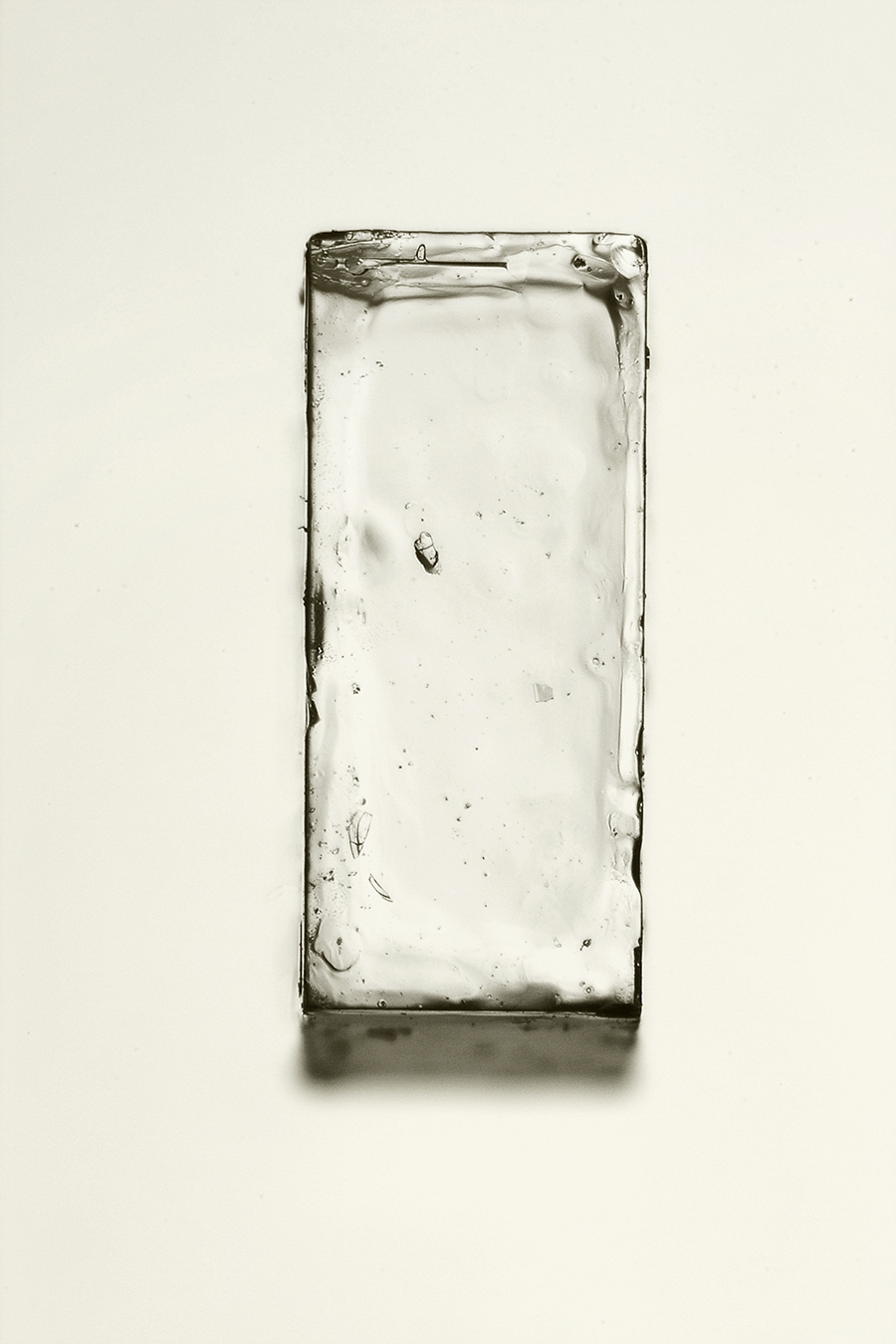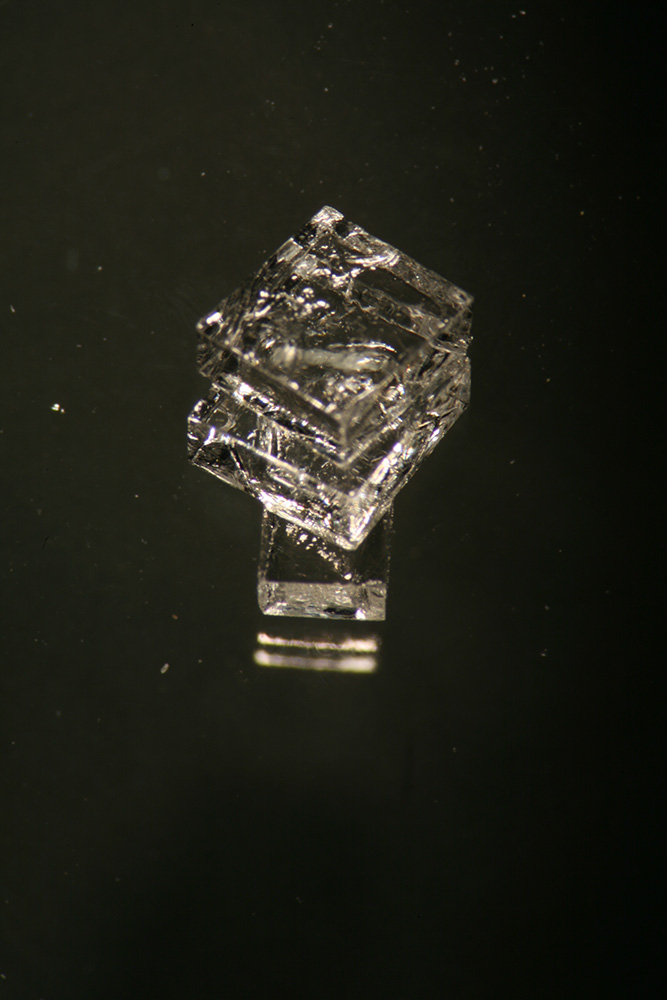Sodium Chlorate Sculpture
Sodium Chlorate Sculpture
colourless, cubic system
solution 123,4 grams of NaCLO3 in 100 ml of H2O
Developed at University College of London
Microscope image
The growth of a crystal takes place through a chemical reaction between salt compounds. This process began to have aesthetic resonance in my work when in the second half of 2006 I collaborated with scientists at the University College of London – Department of Chemistry with Dr. Andrea Sella. From a theoretical point of view, the work also involved an understanding of the second law of thermodynamics, in relation to entropy, in the development of the growth of crystals and inorganic salts. The scale of the investigation was then oriented to contained, organized, transparent and silent energy.
Crystal growth takes place in specific conditions of temperature and saturation, and sometimes pressure. My speculation concerning the transformative process of the solution begins with the initial moment of the transformation of the liquid into a solid – the emergence of crystal seeds called nucleation – followed by the process of the structuring of layers in which a solution, the mother liquor, feeds the growth.
b) Communities and visions. Moholy Nagy’s first sets of photograms were produced during his stay on a summer camp. He often used flowers, roots and sunlight as source material. Nature de-materialized or better, nature used to create visions of nature de-materialized. These images articulate an act of transposition, roots and flowers becoming shadow plays, flat, bi dimensional, elementally recomposed. In doing so Moholy Nagy upset our grammatical system in the name of what he considered to be the new lingua franca: abstraction plus the promise of spiritual enlightment. But above all, what the photograms seem to have achieved is the total recomposition of atomic reality. Not to the level of absolute obliteration- decomposition- but to the edge of obliteration- recomposition-, where objects are still able to produce a fleeting architecture of light and darkness which, by the same token, is regarded as the last marks of their own transformation. Objects expanding, uncompressed, crystallizing at the threshold of their own immateriality.
Excerpt from Annotation text for Nucleation Exhibition, 2009
by Armando Andrade Tudela.
////////////////
b) Comunidades e visões. A primeira série de fotogramas de Moholy Nagy foi produzida durante sua estadia em um acampamento de verão. Ele frequentemente se utilizava de flores, raízes e da luz do sol como matéria-prima. A natureza desmaterializada, ou melhor, a natureza usada para criar visões da natureza desmaterializada. Essas imagens articulam um ato de transposição: raízes e flores se tornam brincadeiras de sombra, planas, bi-dimensionais, recompostas elementalmente Ao fazer isso, Moholy Nagy perturbou nosso sistema gramatical em nome daquilo que ele considerava ser uma nova língua franca: abstração aliada à promessa de iluminação espiritual. Mas o que os fotogramas parecem ter atingido, acima de tudo, é a total recomposição da realidade atômica, não ao nível da destruição absoluta – decomposição – mas até a margem da destruição – recomposição –, onde os objetos ainda são capazes de produzir uma arquitetura fugitiva de claro e escuro, que é vista, pela mesma razão, como a última marca de suas próprias transformações. Objetos expandindos, não comprimidos, cristalizados, no limiar de suas próprias imaterialidades.
Excerto de Anotações para Exposição Nucleação em 2009
de Armando Andrade Tudela.

